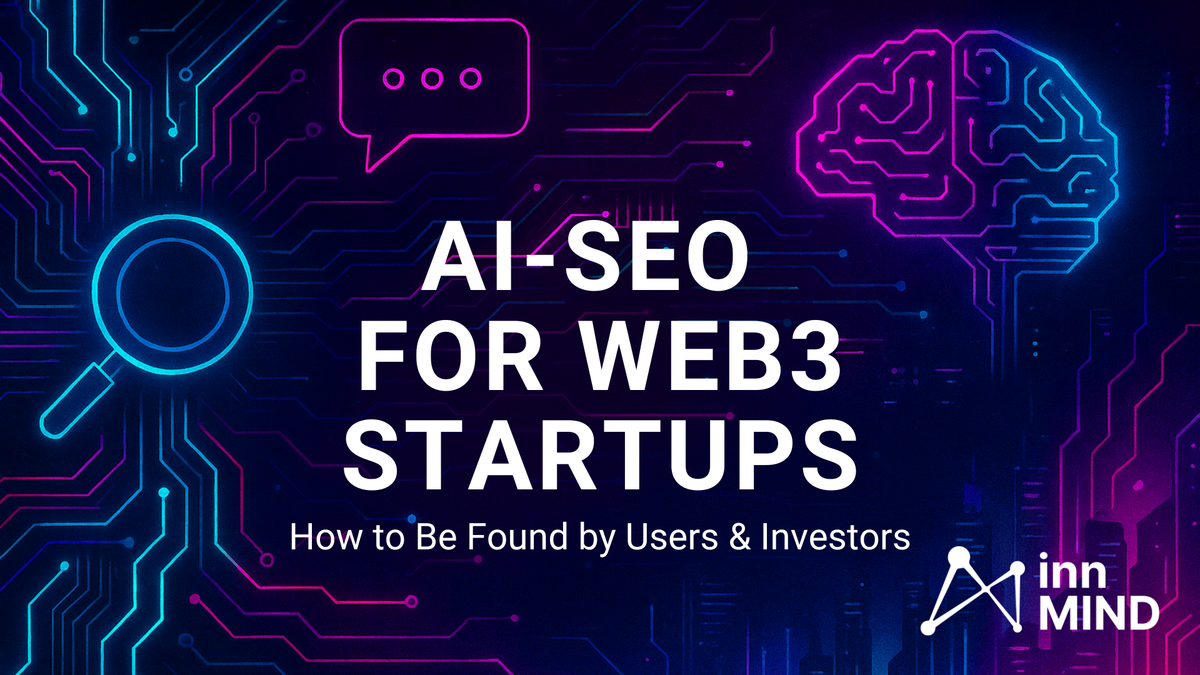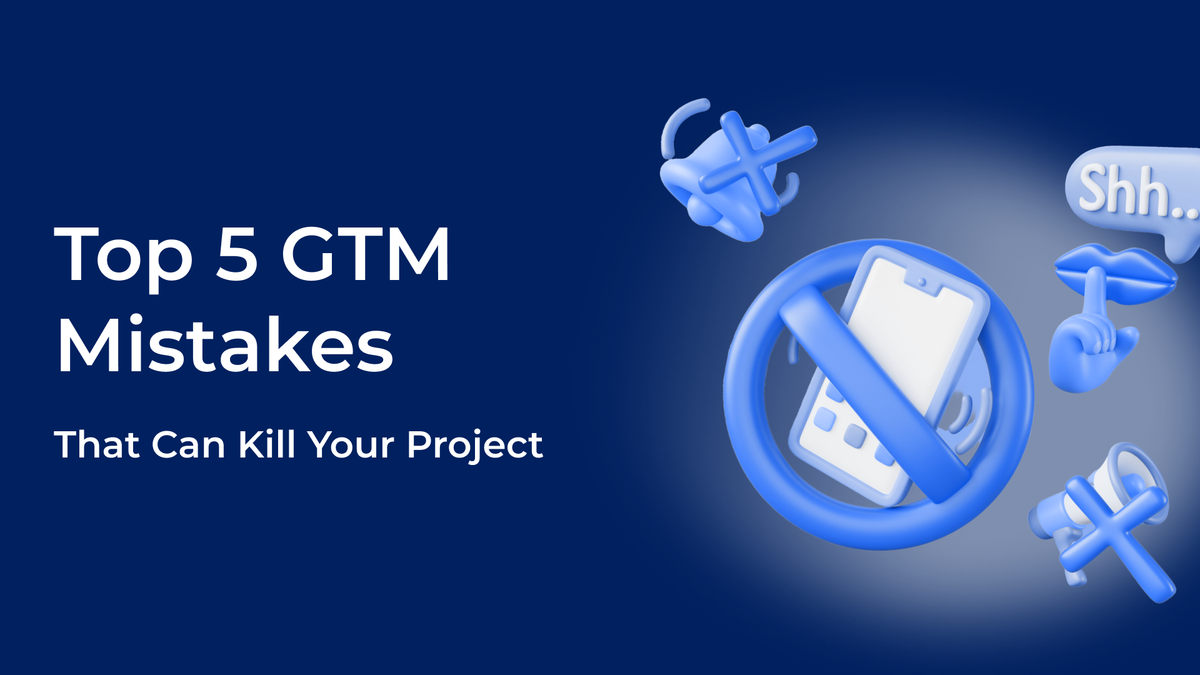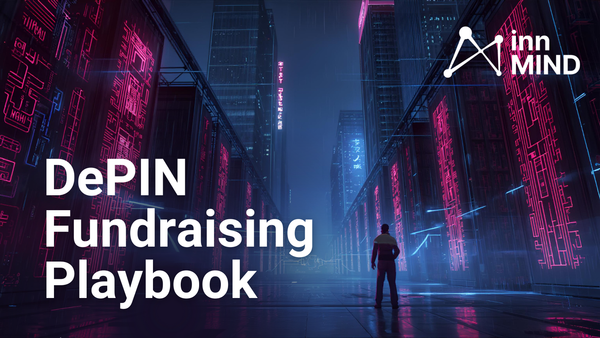AI-SEO for Web3 Startups: How to Be Found by Users and Investors
Search is shifting from Google results to AI answers. This guide explains why traditional SEO falls short in the crypto space and how to make your project more visible with AI-optimised content, clean tech, and fast-loading formats that users and investors actually find.

In 2025 the digital marketing changed fundamentally, and it will never be back to what we’re used to. AI adoption shifted the way you attract organic traffic from Google and other search engines. Search behaviour has changed forever. People do not sift through ten blue links anymore. They tell AI tools what they want and expect a direct, trustworthy answer. If your project is missing from those answers, you are invisible to the next wave of users and investors.
Why classic SEO strategies fail in the crypto and Web3 niche
Classic SEO was built for static pages and keyword lists, while Web3 moves fast, and AI systems now sit between the user and your site. AI agents function as a new distribution layer, shortening the path from question to decision and allowing them to skip pages that are slow or difficult to parse.
Many crypto sites still prioritise content for the eye rather than for machines, featuring images that lack alt text, custom fonts that slow down rendering, and thin or missing metadata. On top of that, teams often treat content like a press release: long PDFs, outsourced blogs on external platforms, and hype over clarity. The outcome is poor indexing, weaker trust, and no presence inside AI answers.
Fixing this is not about slogans. It is about making your pages readable for AI, fast to load, and structured around real user tasks. At InnMind, we dug into what it takes in 2025–2026 to make digital marketing actually work for startups and to win placement inside AI agents. To pressure test our approach, we spoke with an expert from Crypto Rank—a team that helps crypto projects, DeFi protocols, and exchanges appear inside AI answers across ChatGPT, Claude, Gemini and more. Their mission is simple: turn your site, docs and content into machine-readable signals so users and investors can discover you through AI, not just search.
Below are concise, field-tested tips from that conversation. Use them to turn strategy into visible results and lay the foundation for the rest of your growth. For a deeper dive, watch the interviews:
5 Actionable AI-SEO Tactics for Scaling Visibility in Web3
- Publish key docs as HTML5, not PDFs. Put your white paper, tokenomics, and technical specs on fast, clean pages on your domain. Add a print button for those who want a PDF. This keeps data readable for AI and versioned in one place.
- Add fast summaries in metadata. Give each page a concise, human-verified summary in the metadata and use proper titles and H1S. AI agents scan these first, so make them precise and consistent with the page.
- Use positive, trust-building language. Avoid negative framing like non: for example, non-hackable wallet. Say the most secure wallet and support it with clear benefits. AI models associate sentiment and context with intent.
- Prioritise speed and accessibility. Keep pages light, use system fonts where possible, compress assets, and describe images with alt text. If a competitor takes five seconds to load and you load in milliseconds, AI will favour you.
- Turn dense docs into short educational videos. Record practical how-to clips and link them back to your manuals. Title videos for real tasks, for example, how to use MetaMask on Linea. This format matches user behaviour and boosts both search and AI visibility.
These building blocks lift user discovery. They also set the stage for better investor discovery, since investors increasingly rely on the same AI interfaces before they ever request a deck.
Using AI for fundraising and investor discovery
AI is becoming the primary influencer for investors. Shortlists and context are no longer built from ten blue links; they come from a single answer that asks follow-up questions, refines intent, and assembles side-by-side comparisons. In the coming months, more investors will run semi-autonomous flows where an agent monitors criteria, updates picks in real time, and surfaces projects that match risk and stage.
To earn a place in these answers, make your story easy for machines to classify and compare. State your category and positioning in clear language, align facts across your site, blog, GitHub, and press, and remove contradictions that erode model confidence. Speak in signals that capital cares about, such as audited security, compliance readiness, user traction, unit economics, and product milestones, and back claims with simple, verifiable numbers. Keep these signals fresh with a steady cadence of updates so AI prefers your data as the current truth.
The payoff is practical. When an investor asks for the best options in your niche, the assistant can identify your project accurately, place it next to familiar alternatives, and summarise your strengths. If larger competitors are not yet optimised for this discovery layer, you can appear first in recommendations and earn the next call.
AI now curates what users try and what investors review. You do not need a big budget to benefit. Small technical fixes, clearer signals, and own-channel publishing make you readable for machines and trustworthy for humans. Start with the quick wins below and let compound visibility do the heavy lifting.
Practical tips you can apply right now
- Run a quick AI-readiness audit. Fix crawl issues, missing metadata, broken internal links, and slow endpoints.
- Own your distribution. Move long-form content from Medium or Mirror to your blog so the ranking builds your domain, not theirs.
- Version public docs on one URL. Add a visible version tag and changelog to prevent mismatched PDFs in the wild.
- How-to videos, mini academy. Record 3–5 short task-focused clips (for example, how to use MetaMask on Linea), include transcripts and chapters, link each video back to docs and product pages, then collect them on a simple academy page and cross-link from docs, FAQs, and the product UI.
- Create an investor facts page. One fast HTML page with tokenomics, governance, security audits, and a clean metric table, all supported by a tight meta summary.
- Protect speed. Remove heavy custom fonts, compress assets, describe images with alt text, and target a sub-second first render on critical pages.
- Train the team. Write for humans first and machines second. Clear structure, consistent terms, short paragraphs, strong headings.
Ready to act on it?
Claim the InnMind perk with Crypto Rank and turn those ideas into traffic and investor visibility. You get a free AI-SEO audit plus 25% off services tailored for ChatGPT, Claude, Gemini, and other models. The goal is simple: make your project show up when users and investors ask AI about the best crypto platforms.
What is included:
- Free initial audit of how your project appears in AI responses
- Custom optimisation plan for leading AI agents
- 25% discount for InnMind startups
This is not traditional SEO. It is optimisation for organic traffic growth in 2025-2026. It is visibility for AI agents, the new front door for discovery in Web3. Do not get left out of AI search. Use the perk, run the audit, and start compounding organic visibility now.
Read also:









